Ask Me Anything • Licensed Master Plumber
A few years ago, I had a blockage in my sink drain and the plumber who snaked it told me it was a good idea to pour some boiling water down the drain every once in a while to clear any fate (editing to correct to "fat" but LOL about fate deposits) deposits. I mentioned this to a friend the other day and they insisted that this was a bad idea as it will degrade the PVC. My internet research seems to bear this out but I thought I would ask you.
grrrrrr.
So I was able to remove the plastic valve ok. The black washer that sits on the spring looked worn out, so I bought a replacement and put it in. But now, after I've reassembled the whole thing, it's still leaking. But worse than that, the handle is not working correctly. If I turn the handle to a hard stop, the valve doesn't completely shut off. I have to stop the handle about 1/4 turn before the hard stop to close the valve.
what did I do wrong?
oy
drummerboy said:
grrrrrr.
So I was able to remove the plastic valve ok. The black washer that sits on the spring looked worn out, so I bought a replacement and put it in. But now, after I've reassembled the whole thing, it's still leaking. But worse than that, the handle is not working correctly. If I turn the handle to a hard stop, the valve doesn't completely shut off. I have to stop the handle about 1/4 turn before the hard stop to close the valve.
what did I do wrong?
oy
there’s only one way to put it in. Can you take it out and reposition it a quarter turn backwards?
ok now I’m seeing your plastic stem with the flat side. Can you open it up fully by turning the stem counterclockwise? Then tighten the nut, put the handle back on, and shut it off turning clockwise.
jamie said:
One of my sink handled seems to have calcified. Handle may be stripped - it just turns. When I remove the handle - I cannot turn it at all (tried with a vice grip). Any easy fix for this? Not a high priority - it's the hot water handle for a sink that I mainly use the cold water side only.
know what they say… if you don’t use it you lose it… I would spray some WD 40 on it and leave it for a while. Do you have hard water in your house?
Jaytee said:
drummerboy said:
grrrrrr.
So I was able to remove the plastic valve ok. The black washer that sits on the spring looked worn out, so I bought a replacement and put it in. But now, after I've reassembled the whole thing, it's still leaking. But worse than that, the handle is not working correctly. If I turn the handle to a hard stop, the valve doesn't completely shut off. I have to stop the handle about 1/4 turn before the hard stop to close the valve.
what did I do wrong?
oy
there’s only one way to put it in. Can you take it out and reposition it a quarter turn backwards?
ok now I’m seeing your plastic stem with the flat side. Can you open it up fully by turning the stem counterclockwise? Then tighten the nut, put the handle back on, and shut it off turning clockwise.
I'm pretty sure the stem had a notch on it, so there's no way to reposition it.
I'll play around with it.
RobertRoe said:
I love talking about plumbing. Thanks so much to Master Plumber. On Newark Way, there is a good electric supply and also a good plumbing supply business. Off of High St. in Orange, there is an excellent garden supply. On Park Ave. in Orange, there is a real good lumber supply business.
I like General Plumbing Supply in Orange as well.
ETA: I see that masterplumber has already recommended them.
How long is a laundry/utility pump expected to last? Ours is a at least 10 years old. Your company is going to fix the discharge pipe for us and I’m wondering if we should proactively also replace the pump at the same time. It’s about the only thing we haven’t replaced since buying our house. Thank you!
drummerboy said:
I'm pretty sure the stem had a notch on it, so there's no way to reposition it.
I'll play around with it.
Hope you had luck. I feel obliged to mention that the stem valve should have a tit (for lack of a better word) on opposite sides of itself that fit into corresponding notchs of the base. Is it possible that you put it in 180 degrees the wrong way? Also, also, the center narrow bit of the valve stem can rotate separately from the rest of it and you have to get that flat bit of it to line up with the inside of the handle.
I hate these freakin' things but I still like my faucet so I replace them when needed while prepared for a bit of frustration.
master_plvmber said:
That valve is going to have to be cut off the pipe it's screwed onto from the floor, then the spud will have to be cut out of the radiator. If the person doing the cutting screws up and cuts either the pipe or the radiator too deeply you'll be in a world of expensive trouble. Having a plumber replace that valve using a saw, chisel and wrenches should cost you around $300 to do it right. Your call.
So my plumber just quoted me $695 to do it this morning
Sailorthom said:
So my plumber just quoted me $695 to do it this morning
I don’t want to comment on pricing in this forum, but that’s insane. Or it’s just not the same job we’re talking about. The valve is $45.
master_plvmber said:
I don’t want to comment on pricing in this forum, but that’s insane. Or it’s just not the same job we’re talking about. The valve is $45.
Cracked spud. New valve and spud replacement
Sailorthom said:
Cracked spud. New valve and spud replacement
We charge about half that. I don’t know what to tell you. I’m surprised.
master_plvmber said:
We charge about half that. I don’t know what to tell you. I’m surprised.
I need a new plumber for the next job. LOL. Thanks
steel said:
drummerboy said:
I'm pretty sure the stem had a notch on it, so there's no way to reposition it.
I'll play around with it.
Hope you had luck. I feel obliged to mention that the stem valve should have a tit (for lack of a better word) on opposite sides of itself that fit into corresponding notchs of the base. Is it possible that you put it in 180 degrees the wrong way? Also, also, the center narrow bit of the valve stem can rotate separately from the rest of it and you have to get that flat bit of it to line up with the inside of the handle.
I hate these freakin' things but I still like my faucet so I replace them when needed while prepared for a bit of frustration.
it's inserted correctly vis à vis the protuberance and yes I lined up the flat part with the handle.
I'm flummoxed.
Anyway, I'm gonna get a replacement for the stem today and hope that fixes it.
Baseboard, hot water circulating system is thumping. Where do I find the relief valve and where f do I I buy a key to bleed the system?
thanx
FJJ
Formerlyjerseyjack said:
Baseboard, hot water circulating system is thumping. Where do I find the relief valve and where f do I I buy a key to bleed the system?
thanxFJJ
the bleeder valve is usually located at one end of the radiator or baseboard. Lift the cover up and look for it. The bleeder tool is sold at Home Depot.
One of our toilets clogs up easily. Unclogs relatively easily too, but it's annoying. Any suggestions on how to go about diagnosing the issue? I haven't noticed the sink or shower in that bathroom have drainage issue, which makes me think the issue is scoped to just the toilet -- maybe too little water, or exit pipe configured poorly?
PVW said:
One of our toilets clogs up easily. Unclogs relatively easily too, but it's annoying. Any suggestions on how to go about diagnosing the issue? I haven't noticed the sink or shower in that bathroom have drainage issue, which makes me think the issue is scoped to just the toilet -- maybe too little water, or exit pipe configured poorly?
We've got the same issue with one of our toilets. A couple of plunges clears it up, but it's annoying.
drummerboy said:
We've got the same issue with one of our toilets. A couple of plunges clears it up, but it's annoying.
As do we. I believe it to be because we have an off-brand toilet that I bought for it’s compact-size (powder room). The piping internal to the toilet seems smaller.
Have had nothing but good luck with our other Toto toilets.
PVW said:
One of our toilets clogs up easily. Unclogs relatively easily too, but it's annoying. Any suggestions on how to go about diagnosing the issue? I haven't noticed the sink or shower in that bathroom have drainage issue, which makes me think the issue is scoped to just the toilet -- maybe too little water, or exit pipe toilets configured poorly?
It's possible that there's something stuck in your toilet. A good way to check for this is to drain the bowl by scooping or vacuuming the water out, and see if anything floats backward into the bowl.
The other thing to consider is that some toilets just work better than others. A lot of technology has gone into making as little water as possible flush as forcefully as possible and the cheaper units just don't quite get it done like the high-falutin' fixtures.
In a large old victorian (basement + 3 floors), sub-divided into 3 apartments, but single heating system. The tenant on the 2nd floor is complaining that it gets too hot.
Owners plumber recommended blocking the vents in the radiator cover.
I do not think that this will do much, as the radiator inside is still releasing the heat. If we wrap the radiator with insulation (inside the radiator cover), this should minimize the heat released on the 2nd floor?
Any thoughts?
tomcat said:
In a large old victorian (basement + 3 floors), sub-divided into 3 apartments, but single heating system. The tenant on the 2nd floor is complaining that it gets too hot.
Owners plumber recommended blocking the vents in the radiator cover.
I do not think that this will do much, as the radiator inside is still releasing the heat. If we wrap the radiator with insulation (inside the radiator cover), this should minimize the heat released on the 2nd floor?
Any thoughts?
If it is a steam system, vents should not be blocked. And radiators should not be turned off.
The vents on the radiators on the 2nd floor should perhaps be smaller. If they are Gorton C or D vents they can be replaced with smaller ones. You would have to look at a Gorton size chart. I think 4 and 5 are the smallest.
Finally, I would think that wrapping with insulation would help.
If I may;
-I ain't no expert but I don't think you can fix the problem by only addressing the radiator on the 2nd floor. Sounds like perhaps the vents of multiple radiators throughout the house may need to be changed as per the (archaic) ratings system according to how far they are from the boiler in order to get a balanced system.
(Dang it, tjohn beat me to it)
tomcat said:
In a large old victorian (basement + 3 floors), sub-divided into 3 apartments, but single heating system. The tenant on the 2nd floor is complaining that it gets too hot.
Owners plumber recommended blocking the vents in the radiator cover.
I do not think that this will do much, as the radiator inside is still releasing the heat. If we wrap the radiator with insulation (inside the radiator cover), this should minimize the heat released on the 2nd floor?
Any thoughts?
None of the responses above are incorrect, but this is a complicated problem in that you have three tenants on one un-zoned system. It's very likely that radiators are oversized given insulation added over the years and also very likely that the tenants have different temperature preferences.
As an additional response, I'd add that TRVs (Thermostatic Radiator Valves) might be a better solution than opening windows, but Master_plvmber really should weigh in.
There is a large stock of multifamily buildings in the Northeast and Midwest with space heating provided by hot water or steam. Typically, residents of these buildings do not pay for heat directly (i.e. heating fuel serves a central plant and use is not sub-metered). Losses from these systems are typically high and a significant number of apartments are overheated much of the time. This is often evidenced by open windows on winter days. Controls and distribution are often faulty and improvements to them can be more cost-effective than boiler replacements.
Thermostatically controlled radiator valves (TRVs) are one potential strategy to combat this problem. TRVs have been in existence for many decades. They are commonly used in Europe and in commercial buildings, but have not been widely accepted by the residential retrofit market in the U.S. Anecdotal evidence suggests that heating systems engineers and contractors have a variety of opinions on the effectiveness of TRVs, illustrating a lack of consensus on this potentially important energy efficiency measure. A review of the limited available literature found that in one study as much as 15% heating fuel savings was accomplished through TRV retrofits, but only if other measures are implemented in conjunction with TRVs.
Assess boiler and building performance to determine if TRVs are an appropriate upgrade for the building. See the Ensuring Success tab for other tips on determining when TRVs make sense.
- Monitor the existing space temperature spread across typical apartments during heating season and diagnose the causes of variation before a retrofit strategy is chosen. This will allow the consultant and building owner to better assess the potential benefits of a whole-building TRV retrofit, selective installation of TRVs in some units, or simply balancing the steam distribution venting. If feasible, an iterative approach in which the venting and boiler controls are tuned first and TRVs are subsequently considered if overheating control opportunities remain is a preferred means of minimizing unnecessary costs. An average heating season apartment space temperature of 75°F or less probably does not merit wholesale use of TRVs; balancing and maintenance alone may be able to reduce the temperature spread between the hottest and coldest rooms and reduce the output of the boiler to bring the average space temp down a few degrees, without making any tenant cold.
- Determine whether some parts of the building might be experiencing drastically different heating loads than the rest. For example, if there is a block of units with large south-facing windows, or a wing of the building exposed to high winds. In such cases, even if the radiator air vents have been regularly maintained and the mains and riser venting is already balanced there might still be a large space temperature spread. TRVs may be an excellent way to limit heat output to the hotter areas and reduce the average space temperature.
- Repair failed air vents and balance uneven steam main venting either in conjunction with or before TRV installation occurs. In some apartments this is likely to increase heat supply. An increase in space temperature for underheated apartments would be a desirable result of air vent maintenance and steam vent balancing; however, this may reduce expected heating fuel savings if good space temperature data has not been obtained beforehand to provide an accurate picture of existing building overheating. Once under-heating has been solved TRVs may provide a useful upper bound to apartment space temperatures.
- Tune the building’s boiler so that is able to deliver dry steam at low pressure (no more than 2 psi) – if this is not the case, water hammer and excess operating pressures may damage the TRVs and/or limit their effectiveness. Ensure that all radiators are properly pitched and that none of the heating system components are in imminent need of repairs.
- Consider the building’s resident population. Are there mostly elderly tenants who desire warmer spaces (75°F+), or younger tenants who might prefer cooler temperatures? Is it a high-end building? Would the tenants tolerate TRVs locked at 70°F or, conversely, would it be a value-add to have adjustable TRV radiator control for each room? Do the tenants have an ingrained window opening habit (as is often the case in previously overheated buildings) that could mitigate the effectiveness of TRVs without proper education?
- If possible, model the property with building simulation software to give insight to the cost-benefit analysis.
- While working on the heating system, obvious improvements such as pipe insulation should also be implemented.
Central hydronic and steam space heating systems typically work by generating heat in a central location (the boiler or boilers) and transmitting that heat to the various parts of the building through pipes carrying hot water or steam. Often, multifamily buildings with these systems have one or just a few heating zones with no or very limited ability to control the heat locally. There are three main types of such space heating distribution systems in the U.S.:
- Single pipe steam systems: In this type of system, steam is generated in a boiler and then transmitted to different parts of the building through a network of pipes that gradually diminish in size as they become more distant from the boiler. The steam then enters radiators in the spaces, gives up it heat, and then condenses into the bottom of the radiator from which it drains down to the boiler through the same pipes that it came up in. Venting of steam lines is critical in single pipe steam systems; only with properly sized and operating air vents on headers, risers and radiators will steam reach all radiators at approximately the same time, which is a hallmark of a well-tuned system. Single pipe steam systems are commonly found in older buildings, especially those built before 1970.
- Two pipe steam systems: In these heating systems, steam is transmitted through one pipe and the condensate (water) returns to the boiler through a second pipe connected to the back end of the heat emitter (radiator). Two pipe systems rely on steam traps to prevent steam from passing through the radiator and exiting into the condensate return pipe. Both one pipe and two pipe steam systems are typically controlled by warm weather shut off controls in which the boiler stops supplying heat to the building if the outdoor air temperature reaches a predetermined threshold. In addition, outdoor reset controls cycle the steam supply as a function of outdoor temperature to deliver only the heat required given the current weather. Two pipe steam systems are common in larger buildings built after 1970.
- Hot water systems: Hot water systems are also common in multifamily buildings. Boilers provide hot water to the radiators or other heat emitters and the return water is pumped back to the boiler to be reheated. Often multifamily hot water systems have circuit setters or balancing valves to make one-time or periodic adjustments to balance the heat distribution. Hot water systems are also two pipe systems. Most multifamily hot water boilers are controlled by outdoor reset control where the supply water temperature is controlled as a function of outdoor temperature.
Efficient control of heating systems has a large influence on energy savings as well as the thermal comfort of residents. According to the Department of Energy, overheating can increase annual heating fuel usage by as much as 3% for each degree Fahrenheit above the desired space temperature set-point.
Depending on the system type, there are a number of ways to balance the system and even out distribution, after which the central heat supply can be reduced. For one-pipe steam, venting is a primary means (McNamara, 1995) (Jayne Choi, 2012). Two-pipe systems can often benefit from properly sized orifices and correcting faulty steam traps (Gifford, 2003). For hot water systems, adjusting the balancing valves can help. However, for many buildings this may not be sufficient, meaning that local controls will be required. One room-level strategy is using a local powered two-way zone valve and thermostat. This strategy provides a high level of control but requires low voltage power to the valve and is expensive (at least $350 per radiator). TRVs are a potentially lower-cost room-level strategy, particularly for certain applications discussed in this guide.
Steam TRVs do not require electric power. They consist of a valve and an operator (plus an air vent in the case of one-pipe steam systems) (Figure 1). A fluid-filled capsule inside the TRV operator expands as room temperature increases. As it expands it closes the valve, blocking entry of steam or hot water into the heat emitter. In the case of one-pipe steam, it blocks the release of air through the vent which prevents steam from entering the radiator (Figure 2). When the room temperature decreases, the capsule contracts, allowing hot water or steam to enter (or air to escape one-pipe systems). A knob on the operator allows an occupant to adjust the temperature at which heat is allowed into the heat emitter (Gifford, 2004).
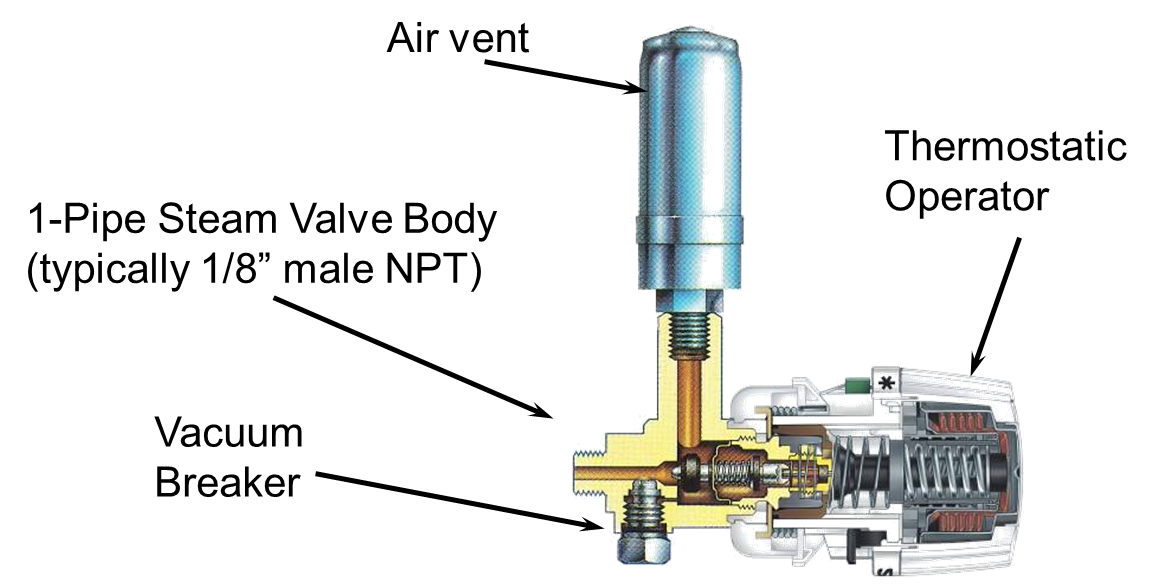
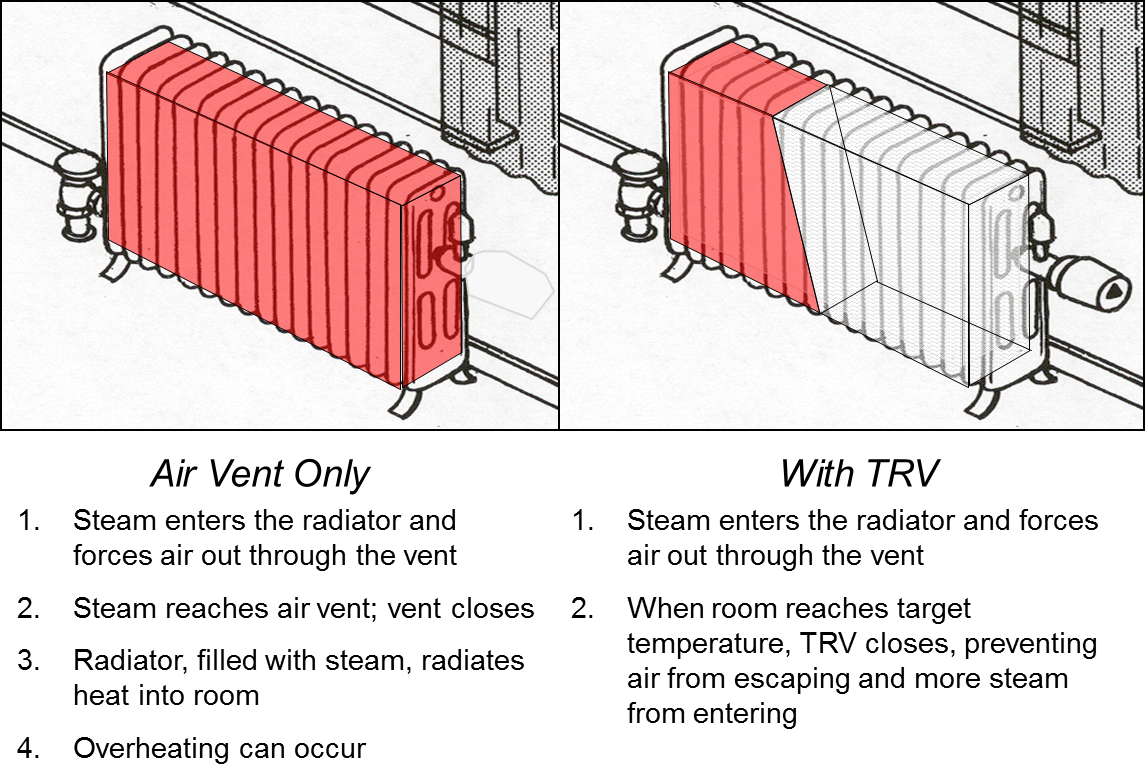
Could be something as small as a Q-tip in the toilet causing the clog. The newer toilets have a better system of evacuation, forcing a little bit less water to flush. Might be time to upgrade it.
I was afraid of that ^^^.
Just that we are generally used to quicker response here.
MP - if you’d prefer that us armchair techs stay out of this thread entirely, let us know.



















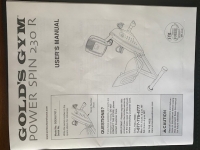
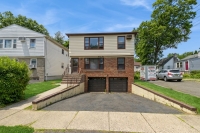
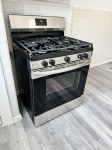

One of my sink handled seems to have calcified. Handle may be stripped - it just turns. When I remove the handle - I cannot turn it at all (tried with a vice grip). Any easy fix for this? Not a high priority - it's the hot water handle for a sink that I mainly use the cold water side only.